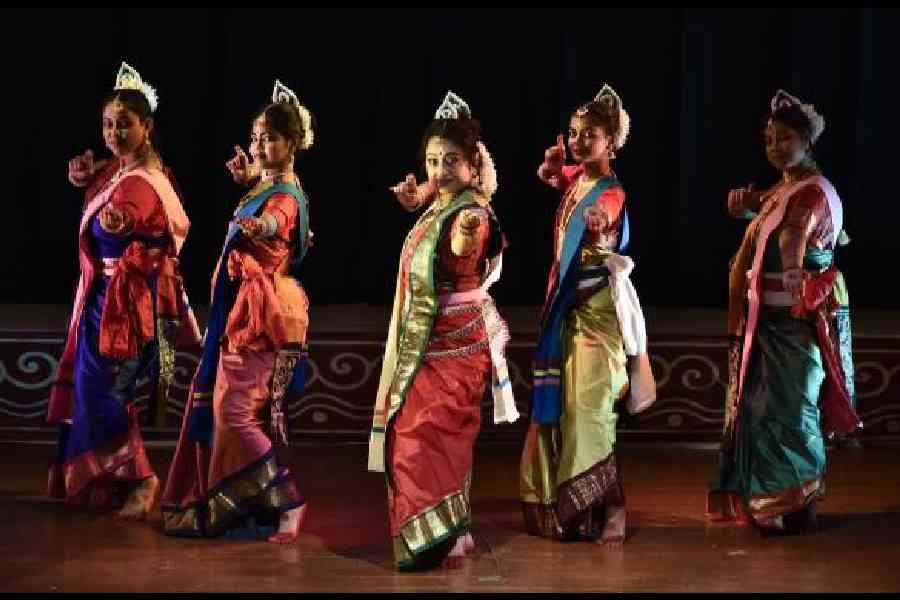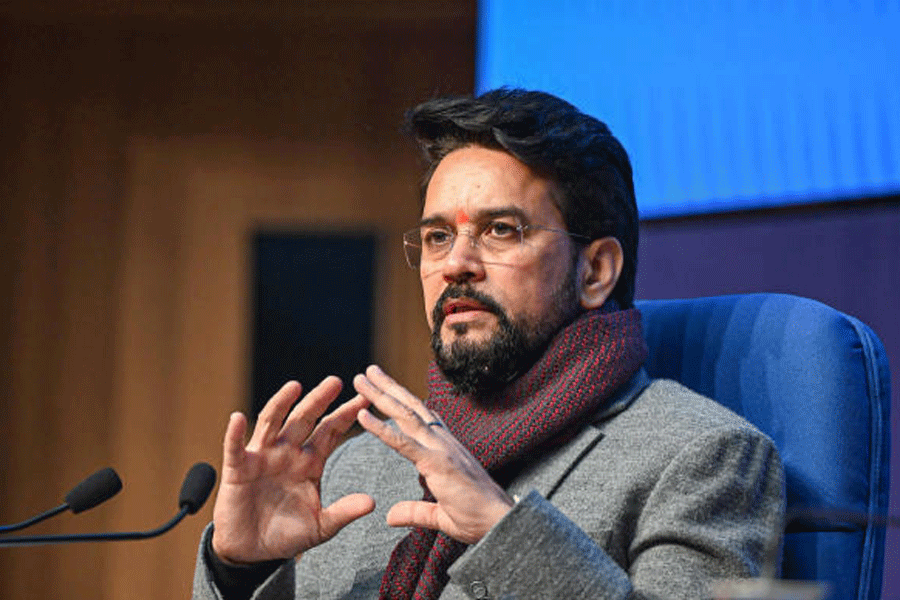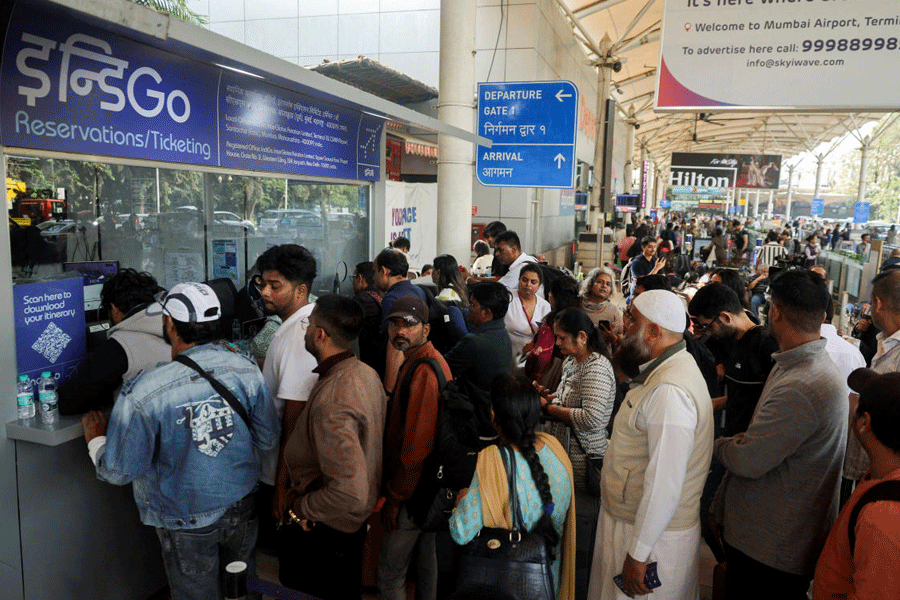Abovahika
Abovahika, the New Town CD Block-based dance institute, presented the dance drama Shyama for Rabindrajayanti at Rabindra Tirtha.
The event began with the vocal renditions of Tagore songs like Charana dharite, Kolahol to baron holo and Godhuli gagane by Tapas Adhikary, accompanied on the synthesiser by Raja Das.
And then it was time to stage Shyama. An audience favourite, the kotwal’s role was performed and choreographed entirely in the kathakali style by Santu Mandal, a teacher of performing arts at Santiniketan.
Bajrasen was choreographed and portrayed by Sujit Ghosh, head of the department of performing arts at Assam University. “This has been a unique production,” he said. “Alongside distinguished guests, the wholehearted participation of the entire audience made the event special.”
The music was produced and recorded under the direction of Tapas Adhikary and Urmi Debnath. Traditional instruments such as the esraj, tabla, pakhawaj, dhaak and others were used, complementing a diverse palette of dance forms including Bharatanatyam, kathakali, and Manipuri.
Ankana Roychowdhury played Uttiyo, and Mahua B. Adhikary, the founder of Abovahika, essayed the titular role of Shyama. “We have previously performed Tagore’s Kalmrigaya and Shaapmochan. We chose Shyama this time as it has an unusually modern storyline, although Tagore wrote it almost a century ago. It’s eternally applicable and holds a special place in my heart,” said Mahua, who works in the air traffic control department at the airport.
Subarna Banerjee
CE Block, New Town
nCE Block cultural committee in New Town recently celebrated Rabindrajayanti and shortly afterwards, Nazruljayanti with performances by residents.
For the first event, Samay Ghosh delivered a soulful rendition of Jodi tare nai chini go, followed by Udbhas Laha’s O monjori o monjori and both received enthusiastic applause. Kakoli Bhattacharjee recited Mukti and Ektar Ali Khan recited Ek gnaye.
Husband-wife duo Gautam and Sumona Banerjee performed too. While he presented an uncommon Rabindrasangeet Amader pakbe na chul, she accompanied him on the harmonium. “I heard this song for the first time just 10 days ago but everyone I asked said they had never heard it. So, when I got this opportunity, I thought of bringing it to the audience,” Gautam said.
The event continued with more songs like Paromita Roychowdhury’s Jokhon porbe na mor and Madhumita Basu’s Olo shoi as well as recitation like Piyasi Laheri’s Jibon debota and Subodh Sarkar’s Colleger ek chhatri.
Another highlight was a chorus by Shelly Biswas Bhattacharya and her team of 10. The evening reached its climax with a tribute to the nationalistic vision of Tagore. This performance brought together 27 residents of all ages in a fusion of music, poetry, and dance.
“I am glad I could watch this beautiful event,” said Hiranmay Saha, in the audience. “My favourite part was the last segment, where they showed how Tagore’s perspective on nationalism stands apart from others.”
Cultural Secretary Subhajit Basu, said they have been celebrating Rabindrajayanti since 2017. “And I am happy that the younger generation is also connected to its roots and is actively participating in the shows.”
At their Nazruljayanti, secretary Alok Das spoke on the importance of hosting a cultural event dedicated to Kazi Nazrul Islam, noting that in previous years when they had combined tributes to both Tagore and Nazrul, the former often overshadowed the latter.
President Tarak Baran Mukherjee described Nazrul’s powerful words as “Agnibeena–aguner moton shobdo” (words like fire from the agnibeena) as he paid tribute and inaugurated the festivities, which began with a group performance of Srijan chhande anonde.
The audience was captivated by songs like Shaono ratey jodi, Ami chirotore dure chole jabo and many other Nazrul classics. “I have been learning Nazrulgeeti for years now,” said Sudipa Mukherjee, one of the singers. “I find joy and exuberance when immersed in Nazrulgeeti,” added another performer Sukla Sinha.
The music was complemented by recitations of poems such as Manush, Bidrohi, Anamika, and Saheb o Moshai and the air soon brimmed with energy as dancers like Utsa Sarmin took stage. She seamlessly blended the innocence of Rum jhum jhum jhum with the intensity of Goroje gombhir.
Nita Banerjee’s experimental dance to Mor ghum ghore ele, performed entirely while seated, drew thunderous applause. “In my art, expression and hand movements are pivotal,” said Banerjee.
The night concluded with a group performance by Kakali Chakraborty, Sumita Roy, Sudeshna Kabiraj, and Debashree Datta Banik.










